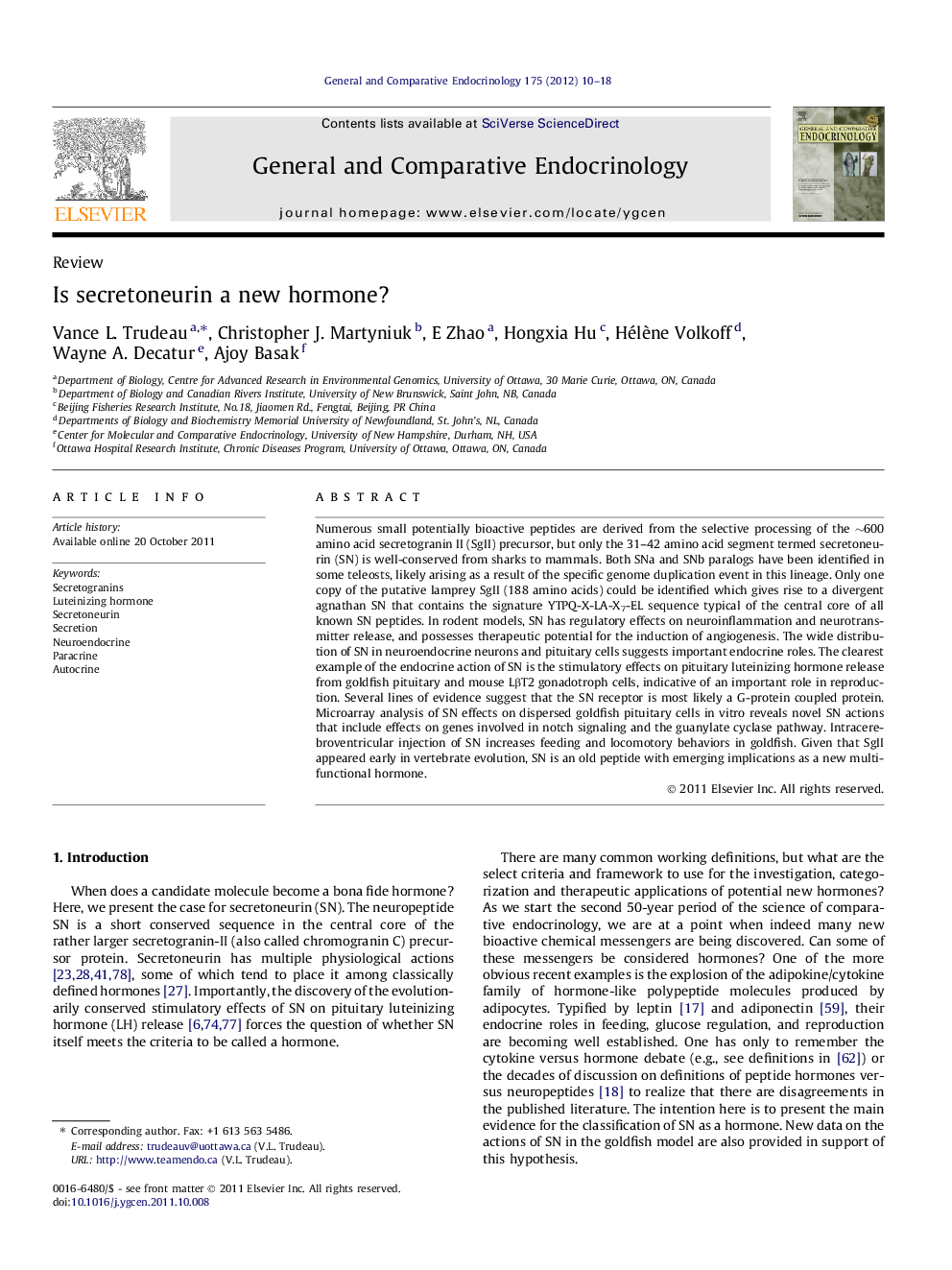| Article ID | Journal | Published Year | Pages | File Type |
|---|---|---|---|---|
| 2800658 | General and Comparative Endocrinology | 2012 | 9 Pages |
Numerous small potentially bioactive peptides are derived from the selective processing of the ∼600 amino acid secretogranin II (SgII) precursor, but only the 31–42 amino acid segment termed secretoneurin (SN) is well-conserved from sharks to mammals. Both SNa and SNb paralogs have been identified in some teleosts, likely arising as a result of the specific genome duplication event in this lineage. Only one copy of the putative lamprey SgII (188 amino acids) could be identified which gives rise to a divergent agnathan SN that contains the signature YTPQ-X-LA-X7-EL sequence typical of the central core of all known SN peptides. In rodent models, SN has regulatory effects on neuroinflammation and neurotransmitter release, and possesses therapeutic potential for the induction of angiogenesis. The wide distribution of SN in neuroendocrine neurons and pituitary cells suggests important endocrine roles. The clearest example of the endocrine action of SN is the stimulatory effects on pituitary luteinizing hormone release from goldfish pituitary and mouse LβT2 gonadotroph cells, indicative of an important role in reproduction. Several lines of evidence suggest that the SN receptor is most likely a G-protein coupled protein. Microarray analysis of SN effects on dispersed goldfish pituitary cells in vitro reveals novel SN actions that include effects on genes involved in notch signaling and the guanylate cyclase pathway. Intracerebroventricular injection of SN increases feeding and locomotory behaviors in goldfish. Given that SgII appeared early in vertebrate evolution, SN is an old peptide with emerging implications as a new multifunctional hormone.
► Secretogranin-II serves a role in the formation of the regulated secretory and is the precursor of secertoneurin. ► Secretoneurin exhibits endocrine, neuroendocrine, paracrine and autocrine activities. ► Secretoneurin regulates LH release and has a role to play in the control of reproduction.
